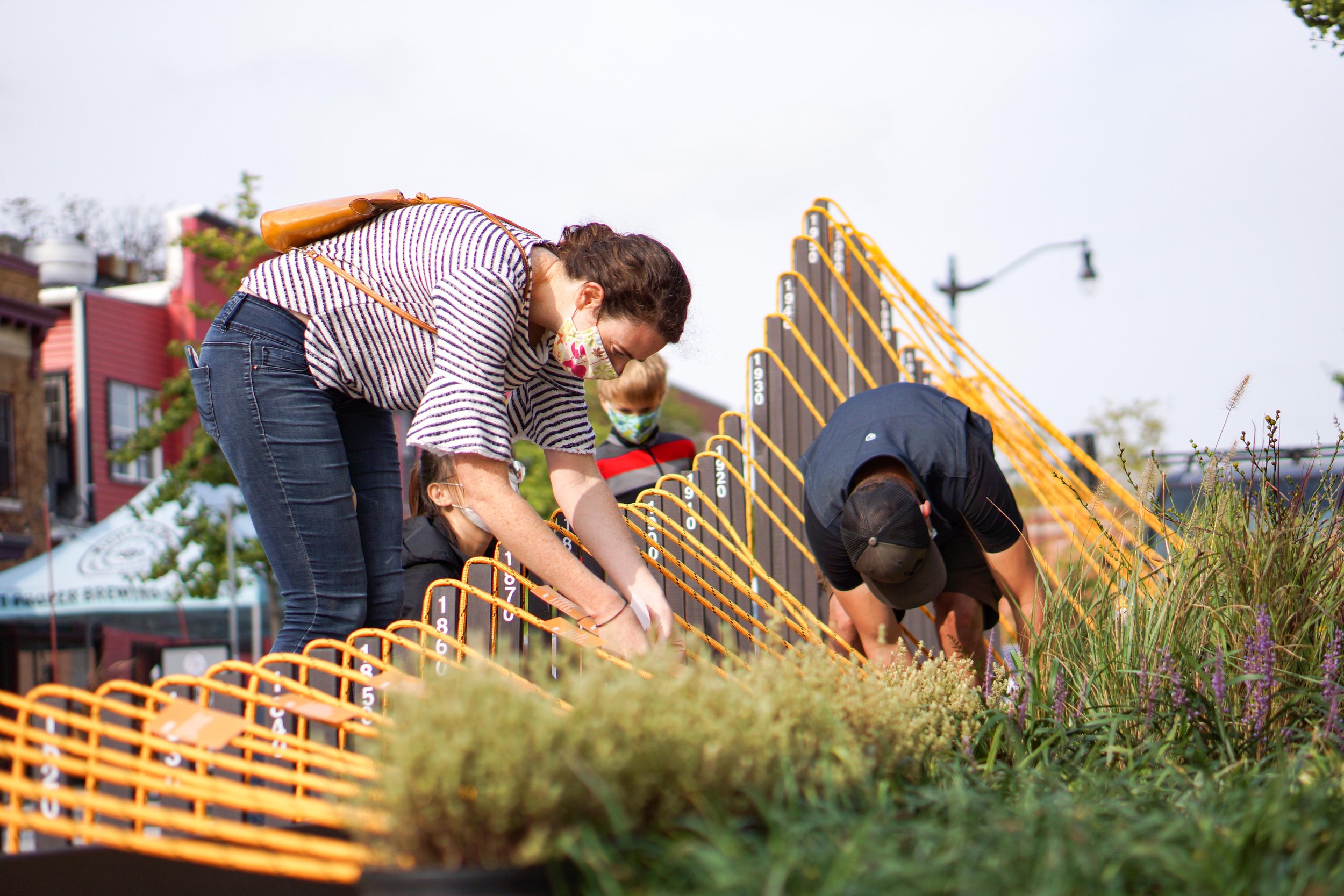
Park(ing) Day 2020 Washington, DC
Services Provided
Design-Build
People Involved
Tim Bragan
Gaelle Gourmelon
Ainsley Rhodes
In collaboration with a local artist, this Park(ing) Day installation reclaims a parking spot adjacent to the historic Howard Theater as a space for education, reflection, and the celebration of DC’s Black history.
For Park(ing) Day 2020, MKSK partnered with Wayside Studio to transform two adjacent parking spots across from the Howard Theatre into an art installation entitled DiasFlora. Sited on “Black Broadway,” DiasFlora explores the floristic impacts of forced migration. Using plants to trace Black population data, the installation helps viewers celebrate the city’s Black history while acknowledging the complex histories that have influenced demographic trends. After learning about these trends, residents are encouraged to take a plant home, thus directly participating in the dispersal of flora and underscoring the movement of people throughout the District. They are encouraged to virtually participate by documenting their plant’s growth online to form a collective trace of the installation’s “diaspora”.
The installation features DC’s overall population trends along a vertical axis and the percentage of Black residents of DC with an undulating rope form along the horizontal axis. It brings to attention important decisions and people that shaped DC’s identity by using small labels during key dates of DC’s history. Plants at the foot of the installation are intended to be taken away by visitors and either placed in their homes or gifted to someone else. The plants are labeled with instructions to invite people to post a photo of their plant to carry the memory of the installation beyond its one-day lifespan.
Since the country’s time as a British colony, the Modern African Diaspora has been intrinsically linked to both the capital and cultural exports of the Washington, DC metropolitan area. In 1790, Maryland and Virginia—two slaveholding colonies—ceded 100 square miles along the Potomac River to form the eventual capital city. The two former
colonies were primary sources of the South’s enslaved labor until the mid-1800s, creating a strong connection between Washington, DC’s history and Black Americans’ experiences in the modern era. After the Civil War, the city’s Black population flourished—in spite of segregation—and brought about a robust civic, cultural, and economic presence. This booming community was largely centered around “Black Broadway”—the present-day U Street Corridor.
DC would go on to be affectionately known as “Chocolate City,” becoming the first predominantly Black major city in the United States by 1957. However, “white flight,” urban renewal, civil unrest, and a crack epidemic catalyzed decades-long demographic shifts in the region. The Black population has since declined by over 25% from its 1970s peak, when more than 7 out of 10 District residents were Black. Today, gentrification and a strained housing market has caused voluntary and involuntary movement of the Black community, as the city undergoes dramatic shifts in representation and identity. This diaspora, of the local scale, is part of a larger pattern of disturbance, disruption, and dispersal.
While the Modern African Diaspora has undoubtedly shaped economics and culture in the Western Hemisphere, it has also influenced its flora. Black people were redistributed, and certain plants followed: tobacco and cotton were harvested for profit at the expense of Black bodies, rice grains were hidden in braided hair on slave ships, and wild medicinal plants were foraged as a means of survival and healing. Collectively, this has manifested hybridized culinary traditions and wellness practices—many with origins on the African continent.











